Roger J. Wendell
Defending 3.8 Billion Years of Organic EvolutionSM


 |
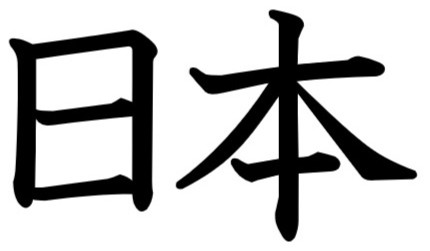
|
Note: Our thoughts and prayers will always remain with the Japanese people after the 03-11-2011 earthquake and Tsunami that created a radiation problem northeast of Tokyo... |
Shinkansen (Bullet Train), Cars and Regular Trains:
The various Shinkansen we were on made it up to 180 mph!! [The faster
ones reach 240 mph but are a bit more expensive] We also rode "regular"
trains, buses, subways and anything else that's of mass transit in Japan.
Their transportation system is clean, efficient, and reliable - certainly
a model for the rest of the world!
 1 |
 2 |
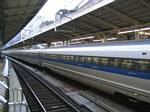 3 |
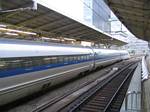 4 |
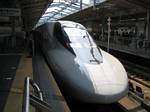 5 |
 6 |
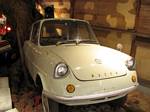 7 |
 8 |
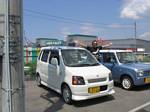 9 |
 10 |
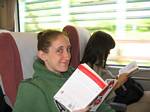 11 |
 12 |
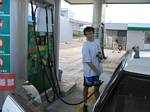 13 |
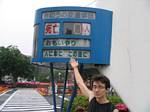 14 |

People:
The best part of any travel!
Young students, studying English, were especially fond of practicing their lessons with us. A lot of older folks approached us as well. There was the man in a small Tokyo restaurant who simply wanted to tell us he was for peace. In Hiroshima, two elderly women, practitioners of Shintoism (Japan's only indigenous religion), prayed over us (with our permission) for peace...
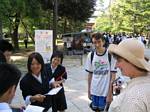 15 |
 16 |
 17 |
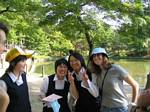 18 |
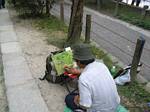 19 |
|
 20 |
 21 |
 22 |
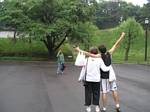 23 |
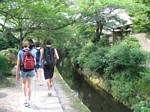 24 |

Hiroshima - City of Peace:
Ever since the nuclear test treaties of the 1960s the Mayor of Hiroshima has submitted a protest letter to whoever the offending government was that authorized such a test. There were well over 100 of these letters on display in Hiroshima, the most recent of which was sent to President Bush for a test that took place in the Nevada desert while were still on our visit in Japan. As I mentioned above, two Japanese ladies asked our permission to pray for peace over us - we heartily agreed and were very moved by the experience...
 25 |
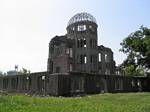 26 |
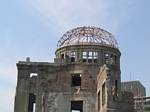 27 |
 28 |
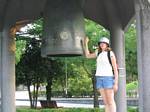 29 |
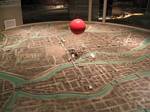 30 |
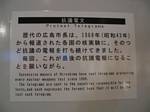 31 |
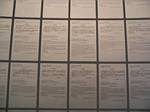 32 |
 33 |
 34 |
 35 |
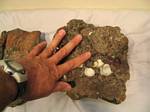 36 |
 37 |
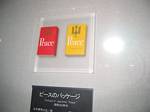 38 |
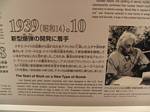 39 |

|
Click Here for the Hiroshima Peace Declaration |

|
Click Here for my own no nukes page... |
Robert McNamera:
"Proportionality should be a guideline to war."Killing 50 to 90 percent of the people of 67 Japanese cities and then bombing them with two nuclear bombs is not proportional, in the minds of some people, to the objectives we were trying to achieve.
"I don't fault Truman for dropping the nuclear bomb. The US/Japanese war was one of the most brutal wars in all human history.
"What one can criticize is that the human race prior to that time, and today, has not really grappled with what are, I'll call it the rules of war. Was there a rule, then that said, you shouldn't bomb, shouldn't kill, shouldn't burn to death one hundred thousand civilians in a night?
"Lemay [General Curtis Emerson Lemay] said if we had lost the war we would have all been prosecuted as war criminals and I think he's right. He, and I'd say I, were behaving as war criminals. That Lemay recognized that what he was doing would be thought immoral, if his side had lost, but what makes it immoral if you lose or if you win?"
Former Secretary of Defense Robert S. McNamara
from the 2004 Errol Morris film documentary, The Fog of War
"Lesson #5: Proportionality should be a guideline in war"
(transcribed by me and Tami)

Food:
Food is always an interesting part of travel. Whenever we're away from home we always try to sample some of the local fare and are almost never disappointed! Something I forgot to photograph, while in Japan, was Nattou. Nattou, a very traditional Japanese food, is fermented soybeans. Our happy little group fondly referred to them as "sticky beans" since long, cheese-like strands of an unidentified substance allowed the beans to stick to each other, our chop sticks, bowls, lips, and everything else! Apparently (according to the Internet - and you know how reliable that is...) there's a fungus or something, in the beans, that prevents them from growing bad forms of bacteria that could hurt us. No worries, since the only one really eating a lot of Nattou was RVW and he's had numerous years to get used to 'em - he eats them every day for breakfast!!!
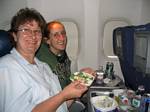 40 |
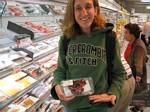 41 |
 42 |
 43 |
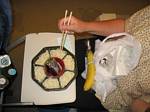 44 |
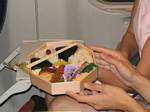 45 |
Soft drinks:
In addition to the "Blendy," noted above, Japan has a huge variety of soft drinks and very modern vending machines to diespense them with. In 2004, while we were there, you could pay for your drink machine selection with your cell phone - something that hadn't even caught on in America or the other places I've been at around the world. Anyway, here is a small sampling of some pretty common drinks you can buy around Japan if you're needing a little taste of home...
 46 |
 47 |
 48 |
 49 |
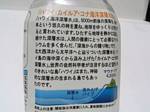 50 |
 51 |
"Hawaii, Kailuah, Kona - Deep Ocean Water 250""Hawaiian Deep Ocean Water" is said to slowly travel the earth at depths of around 5000m as the eons pile one on top of another. This deep water has quietly continued to circulate the earth and is loaded with magnezium which essential to human health. It is "a gift from the ocean depths." The water has traveled from the northern atlantic ocean, to the pacific ocean where it is drawn up from the deep see off of hawaii and named "Kailuah, Kona Deep Ocean Water." Hawaii, with its clean air and water, is still an island where this mysterious deep ocean water is born and even the worlds natural scientists have taken notice.
picture:
title: Mauna Keia
island shape :kona
pipe looking thing: suction pipe
current looking thing : deep waterbelow picture:
Usage information : After opening refrigerate and please drink before the expiration date
Hard drinks:

Pagodas, ZEN retreat, and Miscellanea:
As you can see in #53, below, it seems like wherever we go in the world we run into something named after our home state of Colorado! In #53 we were told to rub Buddha on a corrseponding body part, where we, ourselves, are hurting, and we'll be healed! The remaining photos, as you can see, feature us sleeping on the floor and visiting a Zen retreat.
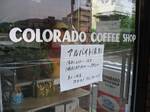 53 |
 54 |
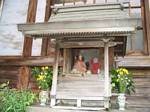 55 |
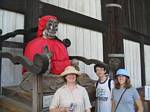 56 |
 57 |
 58 |
 59 |
 60 |
 61 |
 62 |
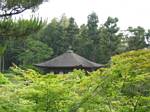 63 |
 64 |

KamLAND:
Kamioka Liquid scintillator Anti-Neutrino Detector)
(Located near the city of Toyama, in the center of the main island Honshu)
RVW took us on this fantastic tour of KamLAND, a Neutrino detector a kilometer or two inside a Japanese zinc mine. We took a jeep ride into the bowels of the mine and then hopped out to get a close-up view the detector and the experiment KamLAND is engaged in (They were the first to measure the mass of a Neutrino, among other accomplishments). Click Here for KamLAND's homepage...
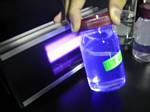 65 |
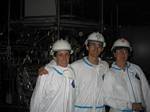 66 |
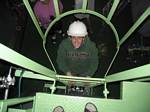 67 |
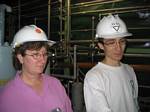 68 |
 69 |
 70 |
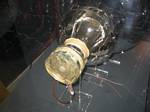 71 |
 72 |
 73 |
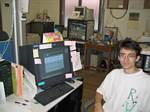 74 |
 |
Click Here for Japanese mountain Video Cams. "a05" is Higashi Mozumi - the location of the KamLAND office "a06" is Do, the town closest to the mine |

|
Click Here for more on physics... |

Snow Monkeys
of Jigokudani Yaenkoen
In early March, 2006 Roger was back in Japan conducting his physics work. While there, he took time out on a Friday morning (Thursday evening Colorado time...) to visit the aforementioned snow monkeys. Luckily there's a live cam, on site, that captures a fresh image every three minutes. The collection below are some of the images I was able to capture live that evening:

|

|
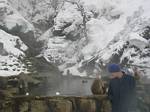
|

|
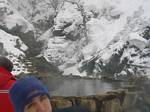
|
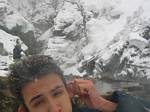
|

|
Click Here for live views from the Monkey cam! |

Japanese Tidbits:

However!

|
Despite our fantastic experiences in Japan their insistence (and that of other nations) on whaling remains unconscionable. These huge, gentle creatures don't need to be hunted for "science" or any other reason!
In this particular photo, Captain Paul Watson (Sea Shepherd Conservation Society) ordered the Japanese-owned Panamanian ship Oriental Bluebird to leave the Antarctic Whale Sanctuary. The Japanese supply ship was waiting to rendezvous with the Nisshin Maru to continue the off-loading of whale meat for transport back to Japan. (January 2006) |
Whaling matters to some places in Japan,
but is hardly a national tradition
"Whaling shapes the way a handful of [Japanese] communities such as Taiji and Wada see themselves, but right-wing politicians from the ruling Liberal Democratic Party (LDP) claim that restrictions on it are an attack on Japan's national identity. This is overdoing things. The boom in consupion came only with the American occupation after the second world war, when whale meat was a cheap source of protein for a malnourished country. That hastened the collapse in whale stocks..."- The Economist
July 14th - 20th 2007, p. 44

Links:
|
|

 Back to Roger J. Wendell's Home Page...
Back to Roger J. Wendell's Home Page...
Abbey |
About |
Blog |
Contacting
Me |
Copyright |
Disclaimer |
Donate |
Guest
Book |
Home |
Links |
Site
Index |
Solutions |
Terms,
Conditions
and
Fair
Use |
What's
Changed
or
New?
Copyright
© 1955 -